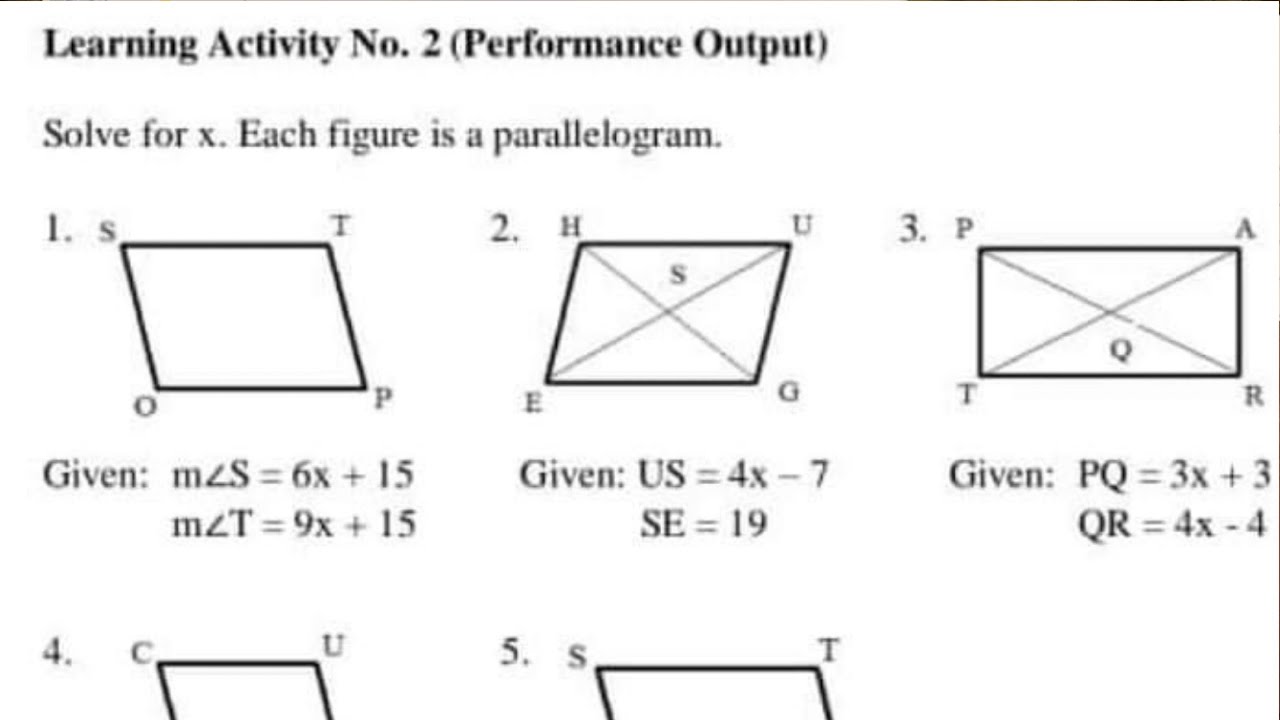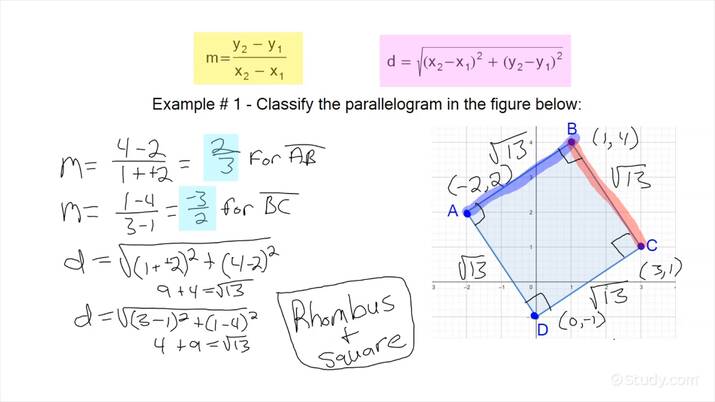Well, now, listen up, I’m gonna tell you about them parallelograms. You know, them shapes that got two pairs of opposite sides, all nice and straight, but they ain’t always as simple as they look. If you got a problem where you gotta find the value of x in a parallelogram, you gotta pay close attention to them angles and sides. Let me explain it to you in simple terms, so you can get it done right.
Now, first thing you should know is that in a parallelogram, the opposite sides are equal in length. So if you see a side on one end, you can know for sure the opposite side is the same length. That’s one thing you can count on, just like you can count on the sun coming up in the morning.

Next up, them angles. The opposite angles in a parallelogram are also equal. That means if you got one angle, the opposite one is gonna be the same. And here’s something important: the adjacent angles in a parallelogram, the ones next to each other, they add up to 180 degrees. So, if you know one angle, you can figure out the other one right away. Like I said, it ain’t so hard if you know the rules.
Now let’s talk about solving for that x thing in the parallelogram. Say you got a diagram in front of you, and you see two sides or angles marked with x. The trick is to use them rules I just told you. For example, if you know two sides are equal, and you got one side marked with x, then you just set it equal to the other side that you know. Like solving a simple little math problem.
Let me give you an example. Suppose you got a parallelogram and one side is 3x + 5, and the opposite side is 7x – 4. Since them opposite sides are the same, you just set them two equal to each other:
- 3x + 5 = 7x – 4
- Now, move all the x terms to one side, and the numbers to the other:
- 3x – 7x = -4 – 5
- -4x = -9
- Now, divide by -4:
- x = 9/4
So, there you go! That’s the value of x in that parallelogram. Simple, right? Just gotta use them rules, and you’ll be fine.
But hold on, there’s more! You might also come across situations where you gotta solve for x and y in a parallelogram. You know, like if you got a question where two sides and two angles have them variables in them. Again, just use what you know: opposite sides are equal, opposite angles are equal, and adjacent angles add up to 180 degrees.
Let’s say you got a parallelogram with two sides marked with x and y, and you know that one side is 4x + 2 and the other side is 3y – 7. And you also know that them adjacent angles add up to 180 degrees. Well, you can use the same method to solve for x and y. First, set the sides equal to each other:

- 4x + 2 = 3y – 7
Then, solve for y in terms of x, or use the other angle rule to help you out. This stuff might take a little time, but just keep working at it, and you’ll get there. You can also use the formula for the area of a parallelogram if you got some extra info, but for now, let’s stick to the basics and keep it simple.
In a nutshell, solving for x in a parallelogram is all about using them rules I told you: opposite sides are equal, opposite angles are equal, and adjacent angles add up to 180 degrees. And remember, practice makes perfect. The more you work through these problems, the easier it’ll get, just like hoeing the garden or making a good batch of jam. You just gotta keep at it, and you’ll get the hang of it in no time.
So, next time you come across a problem where you gotta find x in a parallelogram, don’t get all worked up. Just follow them rules, and you’ll solve it in no time!
Tags:[parallelogram, solve for x, geometry, parallelogram angles, opposite sides, opposite angles, adjacent angles]